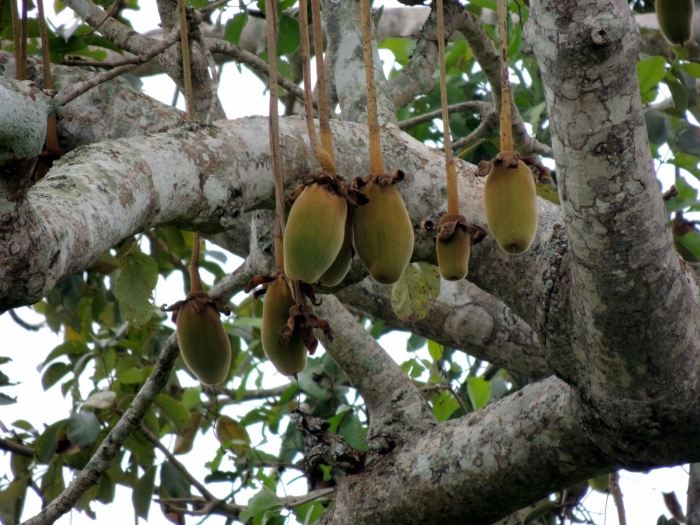African Baobab
(Adansonia digitata)
African Baobab (Adansonia digitata)
/
/

Vijay Barve
CC BY 4.0

























Estimated Native Range
Summary
The African Baobab is valued for its remarkable water-storing capacity, making it a symbol of life and resilience in its native landscape. It is often planted as an ornamental tree in large landscapes and is also used for shade and as a focal point in gardens due to its unique form. In cultivation, it requires full sun, well-drained soil, and can tolerate drought once established. The baobab is also culturally significant, featuring in many African legends and practices. However, it is susceptible to root rot if overwatered and can be difficult to grow in non-native environments due to its specific climate requirements.CC BY-SA 4.0
Plant Description
- Plant Type: Tree
- Height: 40-80 feet
- Width: 20-60 feet
- Growth Rate: Slow
- Flower Color: White
- Flowering Season: Summer
- Leaf Retention: Deciduous
Growth Requirements
- Sun: Full Sun
- Water: Low, Medium
- Drainage: Fast, Medium
Common Uses
Bird Garden, Butterfly Garden, Drought Tolerant, Edible*Disclaimer: Easyscape's listed plant edibility is for informational use. Always verify the safety and proper identification of any plant before consumption., Low Maintenance, Showy Flowers
Natural Habitat
Native to arid, open woodlands and savannas of sub-Saharan Africa and the hot, dry regions of the southern Arabian Peninsula
Other Names
Common Names: Baobab , Affenbrotbaum , Monkey-bread Tree , Baobá , Dead-Rat-Tree , Imbondeiro , Upside-down Tree , Nkondo , Baobab Tree
Scientific Names: Adansonia digitata , Adansonia bahobab , Adansonia baobab , Adansonia baobab , Adansonia digitata var. congolensis , Adansonia integrifolia , Adansonia kilima , Adansonia scutula , Adansonia situla , Adansonia somalensis
GBIF Accepted Name: